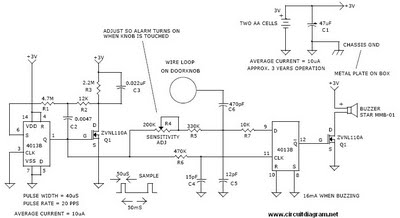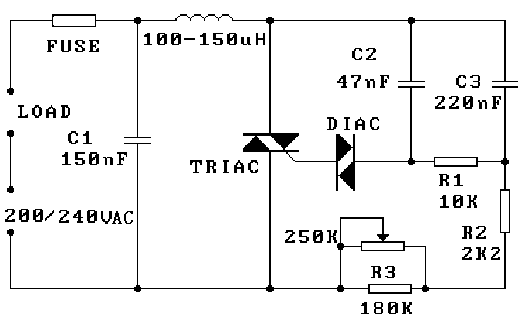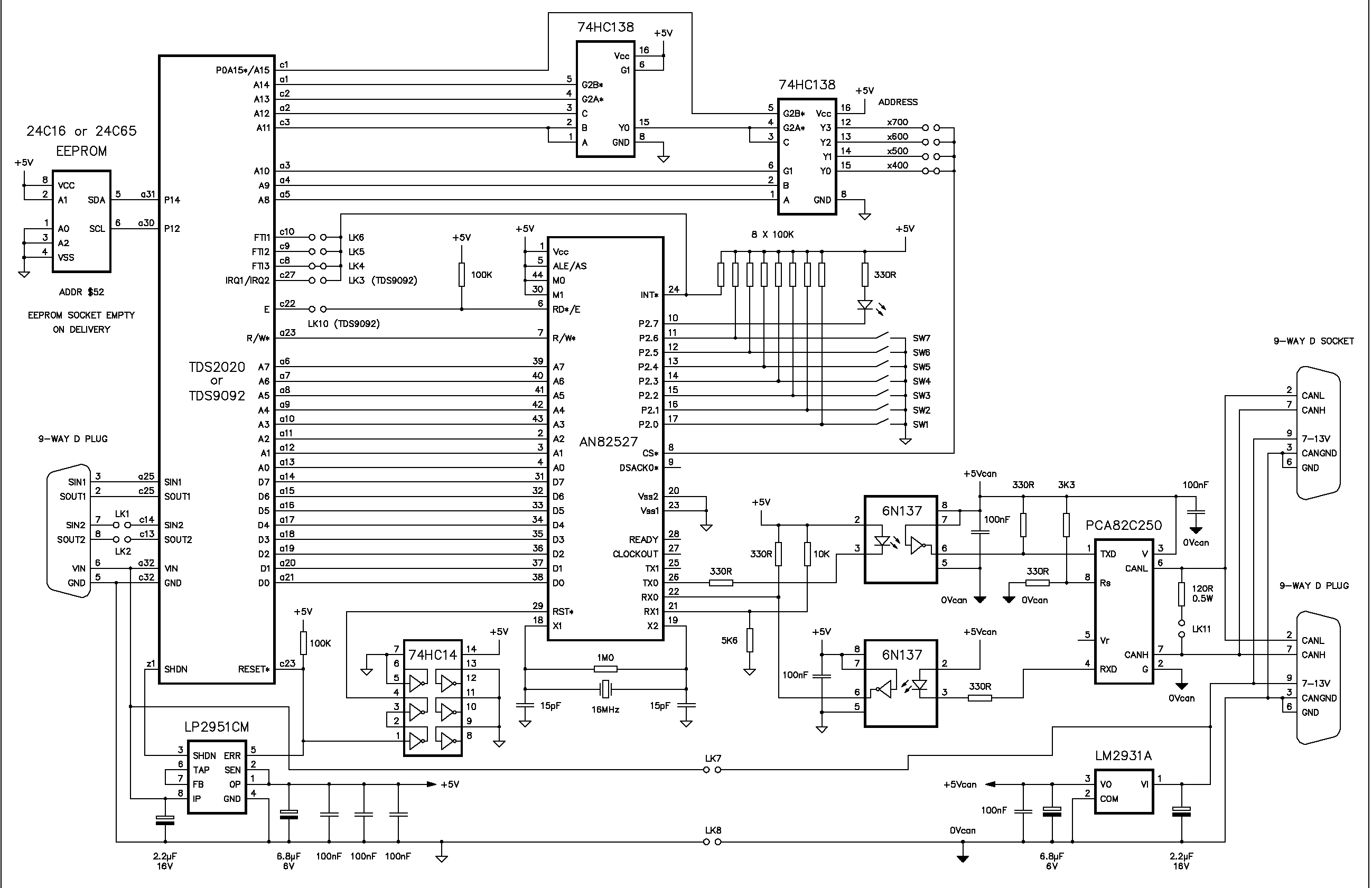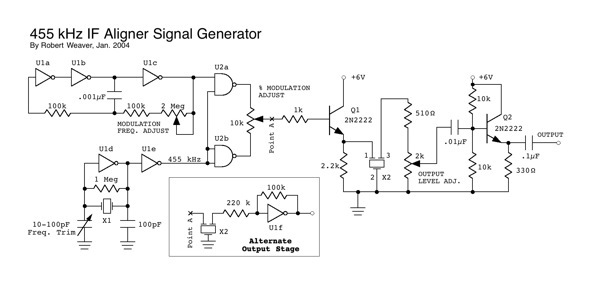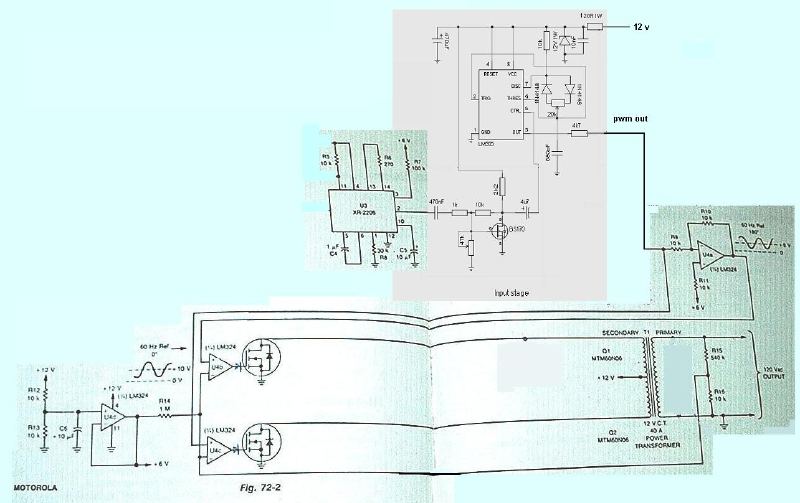
About Area 50
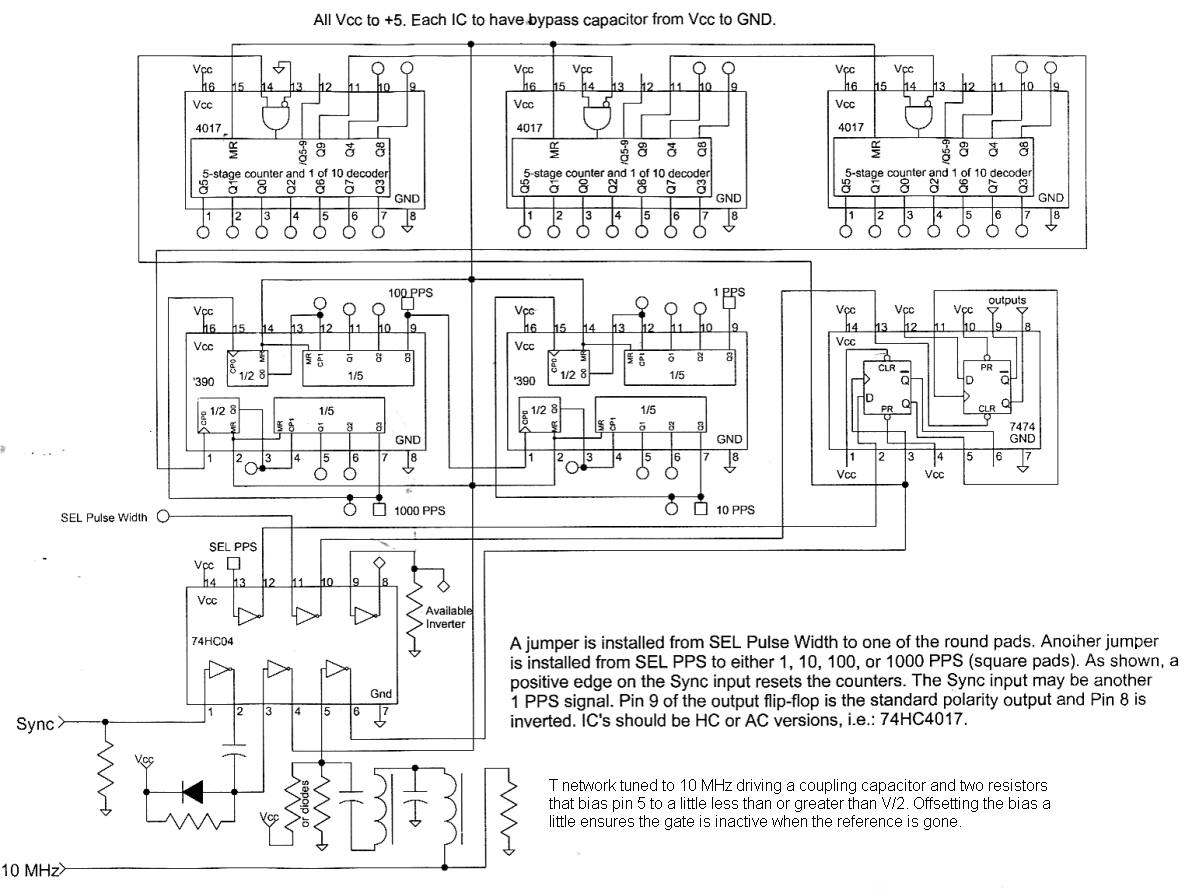
This circuit divides a 10 MHz reference signal to produce outputs of 1, 10, 100, or 1000 pulses per second. The pulse width can be selected using jumpers, offering multiple options. A synchronization input aligns the output pulses with an external signal, such as one from a GPS receiver. The output signals are available at pins 8 and 9 of the 7474 flip-flop. The input section, located at the bottom of the schematic, represents a typical sine-to-square converter. The components for this converter are not included in the prototype shown in the photograph. A direct logic level signal can be applied to pin 5, and a line receiver can also be utilized to convert a sine wave to a square wave.
This circuit operates as a frequency divider, utilizing a 10 MHz reference signal to generate lower frequency outputs. The choice of output frequencies—1, 10, 100, and 1000 Hz—allows for versatile applications in timing and clock generation. The use of jumpers to select pulse width adds flexibility, enabling customization based on specific requirements. The synchronization feature is crucial for applications requiring precise timing alignment, particularly in systems interfacing with GPS or other timing sources.
The outputs at pins 8 and 9 of the 7474 flip-flop are the result of the division process. The 7474 is a dual D-type flip-flop that can be configured for various counting and timing applications. The circuit design allows for easy interfacing with other digital components or systems.
The input section's depiction as a sine-to-square converter suggests that the circuit can accept analog signals and convert them into a digital format suitable for processing by the flip-flop. While the prototype does not include the specific components for this conversion, it is common practice to use a logic-level signal directly at pin 5 of the 7474. This simplifies the design and reduces component count.
For applications where input signals are analog, employing a line receiver can effectively square up a sine wave, ensuring that the input to the flip-flop is clean and reliable. This approach enhances the performance of the circuit, particularly in environments where signal integrity is paramount. Overall, this frequency divider circuit is a robust solution for generating accurate timing signals across a range of applications.This circuit divides a 10 MHz reference to 1, 10, 100 or 1000 pulses per second. The pulse width is also jumper selectable with lots of choices. A sync input will align the pulses with an external pulse, say from a GPS receiver. The outputs are hiding over there at pins 8 and 9 of the `7474. The input is at the bottom of the schematic and is reall y just a sketch of a typical sine-to-square converter. Those parts aren`t on the prototype in the photo. Just use a logic level directly into pin 5. A line receiver is a good way to square up a sine wave, too. 🔗 External reference
This circuit operates as a frequency divider, utilizing a 10 MHz reference signal to generate lower frequency outputs. The choice of output frequencies—1, 10, 100, and 1000 Hz—allows for versatile applications in timing and clock generation. The use of jumpers to select pulse width adds flexibility, enabling customization based on specific requirements. The synchronization feature is crucial for applications requiring precise timing alignment, particularly in systems interfacing with GPS or other timing sources.
The outputs at pins 8 and 9 of the 7474 flip-flop are the result of the division process. The 7474 is a dual D-type flip-flop that can be configured for various counting and timing applications. The circuit design allows for easy interfacing with other digital components or systems.
The input section's depiction as a sine-to-square converter suggests that the circuit can accept analog signals and convert them into a digital format suitable for processing by the flip-flop. While the prototype does not include the specific components for this conversion, it is common practice to use a logic-level signal directly at pin 5 of the 7474. This simplifies the design and reduces component count.
For applications where input signals are analog, employing a line receiver can effectively square up a sine wave, ensuring that the input to the flip-flop is clean and reliable. This approach enhances the performance of the circuit, particularly in environments where signal integrity is paramount. Overall, this frequency divider circuit is a robust solution for generating accurate timing signals across a range of applications.This circuit divides a 10 MHz reference to 1, 10, 100 or 1000 pulses per second. The pulse width is also jumper selectable with lots of choices. A sync input will align the pulses with an external pulse, say from a GPS receiver. The outputs are hiding over there at pins 8 and 9 of the `7474. The input is at the bottom of the schematic and is reall y just a sketch of a typical sine-to-square converter. Those parts aren`t on the prototype in the photo. Just use a logic level directly into pin 5. A line receiver is a good way to square up a sine wave, too. 🔗 External reference
